Casa Mila, also known as La Pedrera, was built by Antoni Gaudi in 1912. It was named after the wavelike design of the stone exterior. Casa Mila is a work of art featuring a ripple-like façade and a surreal sculptural rooftop. The building is different from the architecture of Antoni Gaudí's time in its design, purpose, and decoration.
A visit to Casa Mila is a must since it reproduces the interiors of the Pedrera apartment from the early 20th century. There is something timeless and mysterious about Casa Mila, that can only be experienced by being there. Ready to give it a try? Let's explore the insides of Casa Mila together and see what we find!
Casa Mila - In a nutshell
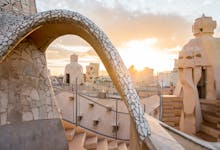
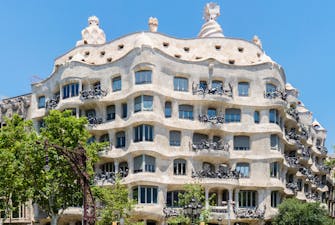
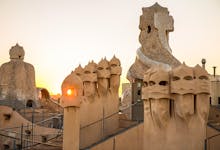
Handy information
| ⏰ Suggested duration: | 3 hours |
| ☀️ Best time to visit: | Early morning |
| 💜 Must see: | Pedrera Roof Terrace |
| 🎟️ Casa Mila ticket: | €Starting from €15 |
| 😍 Casa Mila + Park Guell combo: | €130 |
Things to know
Number of visitors per year: 1 million
Established: 1912
Architect: Antoni Gaudi
Architectural style: Modernism
Must-see
Espai Gaudi
Pedrera Apartment
Warrior Rooftop
Flower Courtyard
The Roof Terrace
The Courtyard
Exhibition Hall
Opening hours and address
Winter schedule
November 2, 2023 - March 3, 2024
From Monday - Sunday, and holidays: 9 AM - 6:30 PM
Sessions night tour - 9 PM - 11 PM
Special Christmas schedule
December 26, 2023 - January 3, 2024
9 AM - 8:30 PM
(On January 1, 2024 - 11 AM - 8:30 PM)
Sessions night tour: 9 PM - 11 PM
Address: Provença, 261-265, 08008 Barcelona, Spain
Get directions
Why you must go inside Casa Mila
The architecture is phenomenal
Built in 1912, Casa Milà's undulating façade and surrealist sculptural roof make it seem organic, rather than artificial. This exemplary building was built by Roser Segimon and Pere Milà and has nine floors: basement floor, ground floor, mezzanine, main floor, four upper floors, and the attic. La Pedrera was inspired by Spain's Art Nouveau style and had a ground-floor garage, a mezzanine for entry, the main floor for Milàs and an upper floor for rent.
The building's two interior courtyards form a figure-eight plan. Another magnificent highlight of fabulous architecture is the sculpture terrace located on the roof. You can move freely and enjoy the space with convenient architectural ancillaries added to the building, such as skylights, emergency stairs, fans, and chimneys. Still, their envelopes create a distinctive sculptural character that has become a part of the building itself.
Learn about Gaudi's life in the attic - Espai Gaudi
Architect Antoni Gaudi is one of the most influential practitioners of Catalan Modernism, which centred on reclaiming Catalan identity through arts and culture. A century has passed since Gaudi's most iconic civil building of Gaudinian architecture was completed: the attic of the Pedrera. Casa Mila (La Pedrera) is considered the most iconic work of Antoni Gaudi's civic architecture because of its construction, functionality, and ornamentation innovation breaking away from the current architectural style. The decorative style of Art Nouveau architecture, Neo-Gothic art, and Oriental methods also influenced Antoni Gaudi's style. He created elaborate and ostentatious structures.
A spectacular rooftop
You will be enchanted by the spectacular view the roof terrace of Casa Mila offers. There is nothing like the roof terrace at La Pedrera-Casa Milà. With the terrace pathways filled with Gaud-style sculptures, you’d feel like you were travelling back in time. The staircases providing access to the attic, the ventilation towers, and the chimneys are all elements of the roof that provide order, aesthetics, and functionality. The monochrome mosaic style that covers four of the six stairwells are made of recycled stone, marble, or ceramic.
For the evening jazz concerts
An evening rooftop jazz concert on one of Barcelona's most iconic buildings is the perfect way to enjoy one of the city's most iconic buildings. Enjoy the jazz nights at La Pedrera, after a historical visit inside Casa Mila, which offers a glimpse into Gaudi's work and approach to architecture. Highlights of these energetic live jazz shows are how it depicts Barcelona's cultural spirit. You can find homegrown jazz acts, traditional jazz music nights, and international musicians. Over the summer, the alfresco stage is set up at night and is an essential destination for jazz musicians from around the globe.
The exhibition rooms
Inside Casa Mila, explore facets of contemporary architecture with a museum full of sub-cultures. This museum is a visual delight for visitors. In addition to exhibitions and musical performances, La Pedrera holds art and cultural events to promote culture. Inside Casa Mila museum, watch the audiovisuals, miniatures, and objects from Gaudi's life. It also features a room called the Pedrera Apartment, which tells the story of life in the "20th century" through audiovisuals, miniatures, and objects.
Buy tickets to go inside Casa Mila
Our Casa Mila tickets are curated to make your visit to Casa Mila a memorable one and worth your money. Check out our ticket options to skip the line, take an audio guide, or take a guided tour. Our top picks are listed below:
Top highlights inside Casa Mila
The Flowers and Butterfly Courtyards
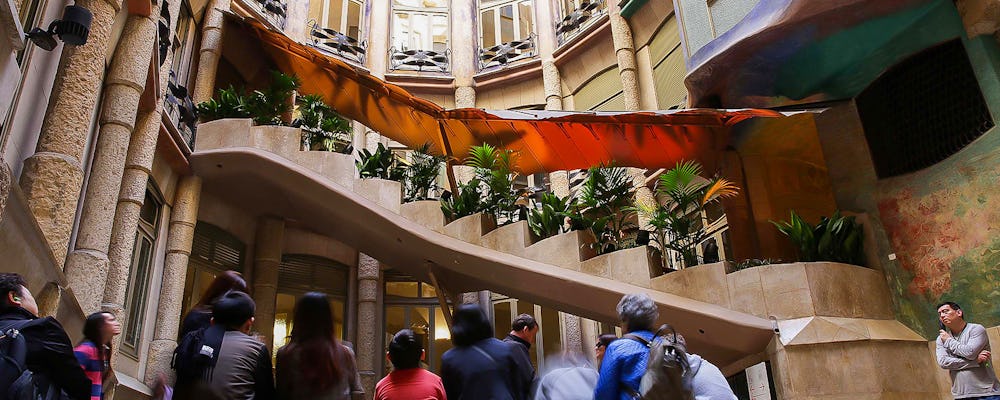
Inside Casa Mila’s Courtyard, find an organized floor plan showcasing floral motifs, mythical and legendary scenes, and little polychrome details. The driveway to the basement is via the main door of Casa Mila, followed by a series of two interconnected courtyards. They have a unique arrangement of windows, allowing natural illumination and ventilation. You will find beautiful murals and details in every colour on the floors.
Rooftop
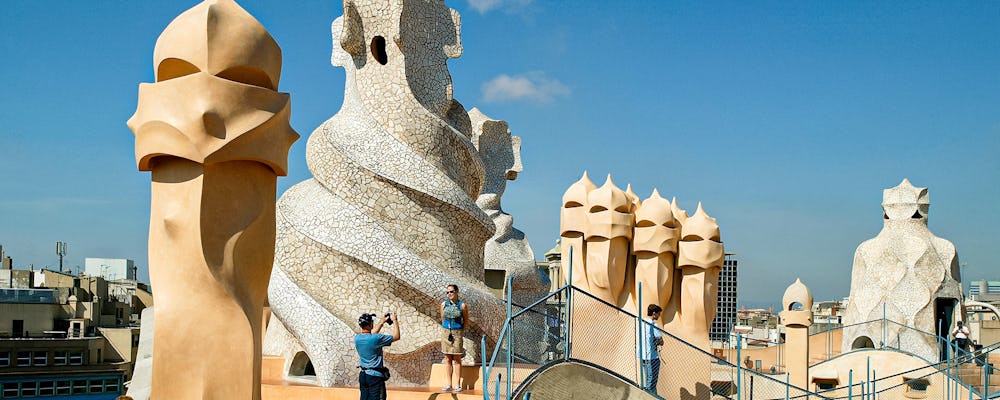
The main highlight of the Casa Mila is its rooftop terrace. Find out the illustrious and detailed sculptures that define modern architectural details mixed with Gaudi's influence on the Art Nouveau style. A stone sculpture on the terrace and mosaics in some places serve a practical purpose as well- they act as vents to keep the building ventilated.
Espai Gaudi
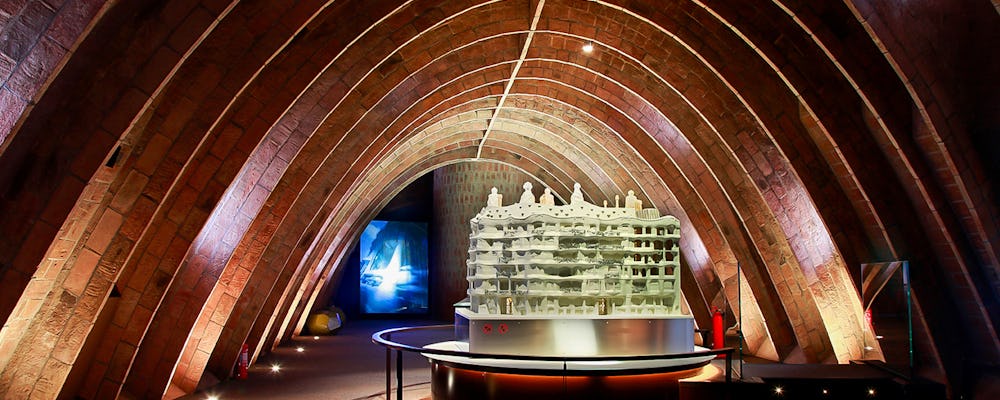
Inside Casa Mila, on the fourth floor, you'll find The Espai Gaudí, a visual room. It is an attic built with 270 parabolic arches. Witness the extensive exhibition dedicated solely to Gaudí's work and life. You'll come across sculptures, models, photographs, and videos that explore Gaudi's life and his architecture style.
The Apartment on the fourth floor
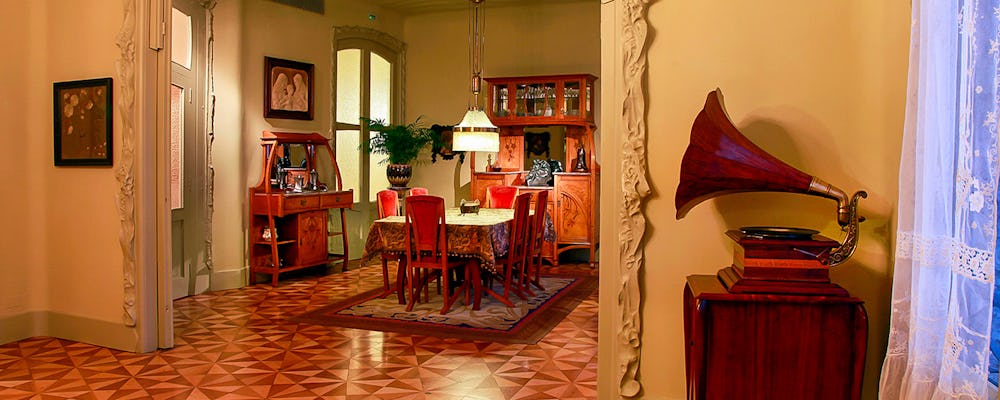
The Pedrera apartment is also known as The Apartment on the fourth floor. It reveals attributes of the building, from many perspectives: its architecture, interior distribution, decorative elements, and habitability. Overlooking Casa Mila's residence, this apartment presents an insight into a bourgeois life in Barcelona in the early 20th century, re-creating the household with domestic furnishings, utensils, and equipment from the time. An audiovisual presentation also demonstrates how the city transformed and modernized in the early 20th century.
The Exhibition Hall
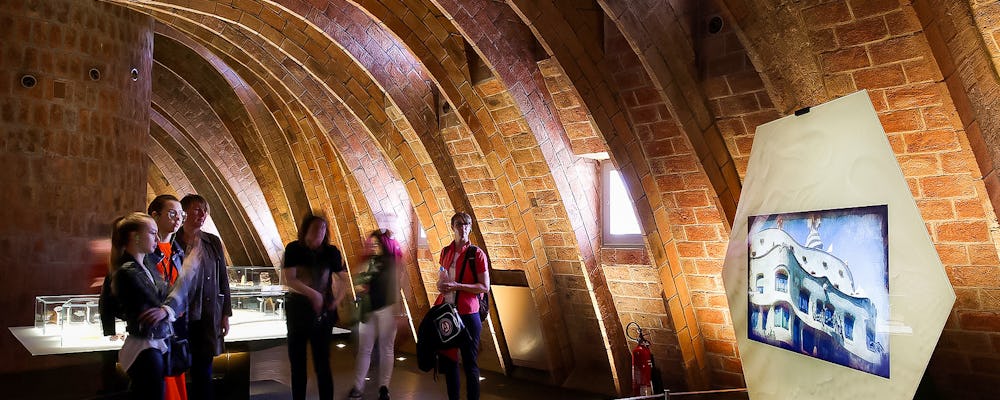
The Exhibition Hall is where you can watch shows, enjoy musical concerts, and tune up your taste for culture. It's located on the upper first floor and exhibits staircases decorated with murals and Gaudi's wrought ironworks.
Wrought-iron balconies
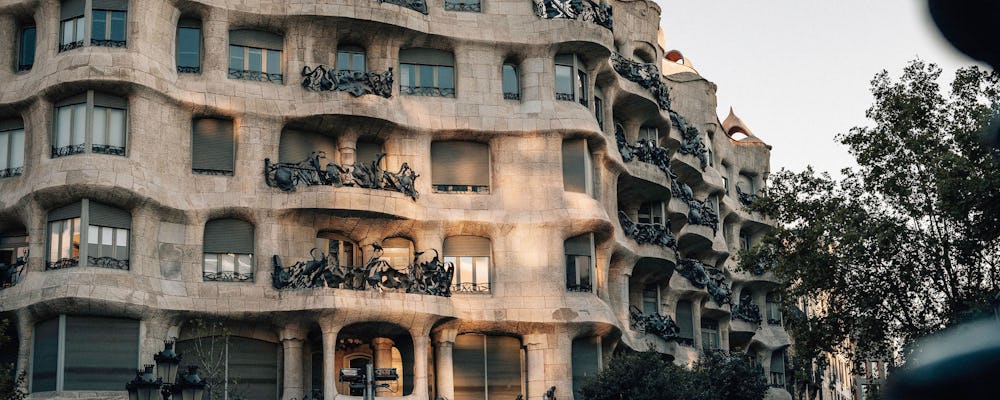
An iconic feature of Casa Mila is the iron-wrought balconies, located on the main floor. Decorated with motifs including flowers, leaves, and animals, the 32 balconies in Casa Mila are made of wrought-iron and glass. Both beautiful and functional, these balconies are yet another example of Gaudi's unique style.
The facade
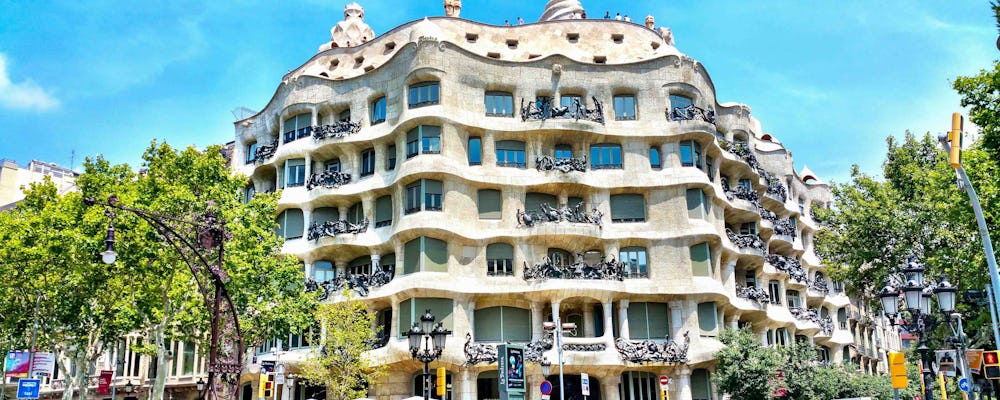
Inside Casa Mila, large limestone blocks form the facade, showing Gaudi's ability to forgo load-bearing walls and allow for a column-free floor plan. Curved iron beams surround the perimeter of each floor to give it support and connect it to the facade. With this innovation, Gaudi achieved a continuous curve and organic geometry, which freed him from traditional structural limitations.
The floor of the Milà family: Showroom
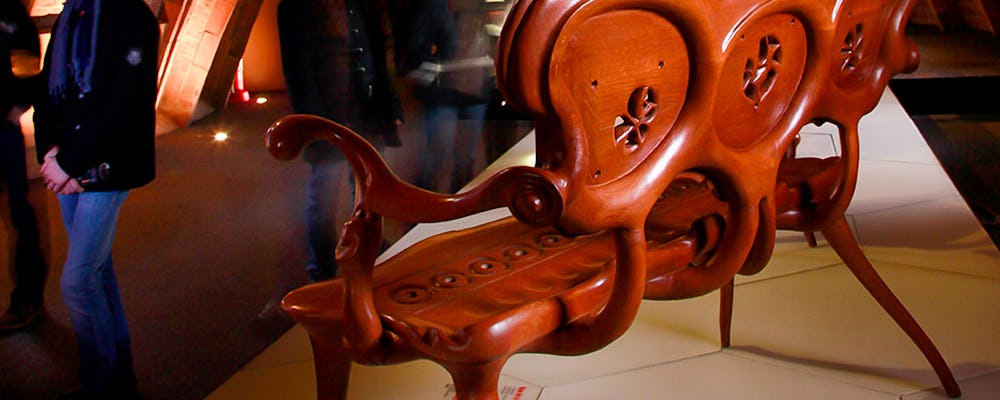
The second floor of the building, where the Mila family lived, is now part of a museum that holds exhibitions to promote art and culture. You can find many original architectural elements inside the building, including columns with sea-shaped reliefs, inscriptions and beautiful ceilings.
Know before you go inside Casa Mila
- Smoking is not permitted.
- Outside food is not allowed.
- The only animals permitted on the property are guiding dogs.
- No flash photography is allowed.
- No phone calls are allowed inside the building.
- No rucksacks are permitted, although Casa Mila has a luggage area where you may safely store your carry-ons.
- The Casa Mila is wheelchair-accessible.
- A special discounted cost at Casa Milà is available to all local Catalans.
FAQs
How much time are you required to spend at Casa Mila?
How much time are you required to spend at Casa Mila?
How much does it cost to visit inside Casa Milà?
Is it good to visit Casa Mila at night?
Is it good to visit Casa Mila at night?
How can you reach Casa Mila?
How can you reach Casa Mila?
Can I buy online tickets for Casa Mila?
Can I buy online tickets for Casa Mila?
What are the main things to see inside the Casa Mila?
Ready to head to Casa Mila?
Purchase discounted Casa Mila tickets via Headout today!
Explore the rest of Barcelona
Fancy heading out to some other must-visit Barcelona attractions? Take inspiration from our list of Barcelona Travel Tips & Hacks here. Use our comprehensive Barcelona Travel Guide to explore the rest of Barcelona in a hassle-free fashion with all the need-to-know information in hand.


